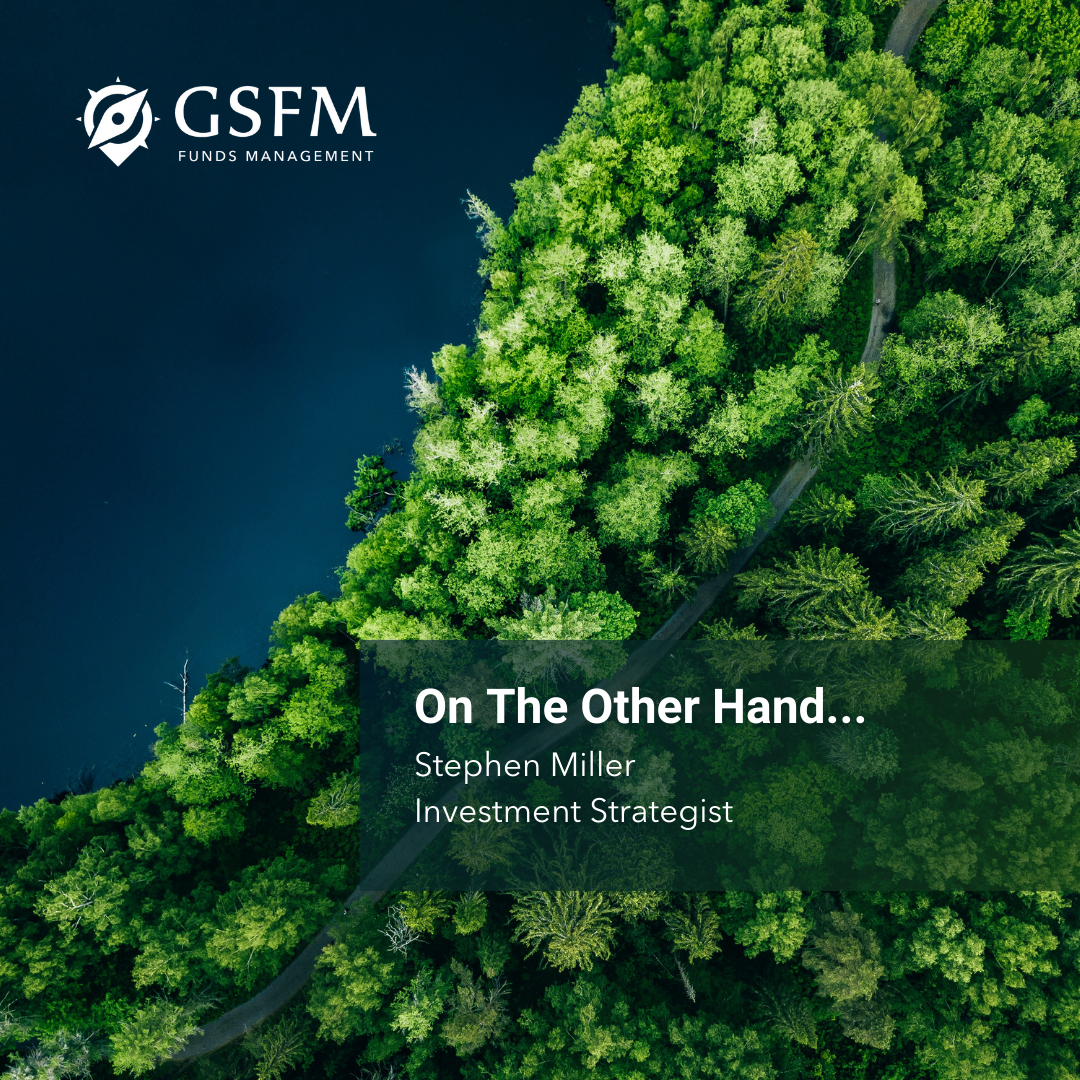One of the overarching principles of prudent investing is diversification.
For some time, it has been the understood wisdom in investing circles – admittedly at a highly simplistic level – that a 60/40 portfolio of equities/ bonds was a reasonable “rough and ready” approximation of appropriate portfolio diversification.
The utility of that 60/40 approach was thought to arise from the assumed negative return correlation between equities and bonds.
Certainly, in the two decades leading up to the pandemic, the logic went that with inflation quiescent, central banks could rapidly ease monetary policy to counter episodes of pronounced downdrafts in economic activity and attendant risk aversion that might otherwise have seen a deep(er) recession. Central bank easing saw sharp falls in bond yields that cushioned any negative consequences on portfolios of declining equity markets. Moreover, declining bond yields tended to arrest the downdraft in equity markets.
That negative return correlation, however, is largely a 21st century phenomenon (see figure one). It didn’t hold up so well during the 20th century, including through the high inflation period of the mid-1960s to the early 1990s. Nor has it held up well in the post-pandemic period where developed economies have exhibited more pronounced inflation proclivities.
Figure one: US Equity-Bond Correlation

Source: Minack Advisors
For most of the 20th century, from the mid-1960s equity and bond returns tended to be positively correlated. There was “bad” positive correlation when accelerating inflation sent bond yields higher creating headwinds for equity markets. There was also “good” positive correlation, particularly with the commencement of the “Great Disinflation” that saw declining bond yields (assisted by central bank easing) and tailwinds for equity markets.
In the wake of the pandemic, a number of developed economies have seen “stickier” inflation which, by and large, has prevented the previous negative correlation between equity and bond returns from reasserting itself.
That begs the question whether the 60/40 equity/bond portfolio remains an appropriate “rough and ready” means of portfolio diversification.
I think not.
Inflation continues to exhibit some “stickiness”. The Trump tariff agenda will exacerbate that in the US, at least in the short-term, and maybe longer if price pressures from tariffs are not quarantined from inflation expectations.
Retaliation will create similar risks in countries that choose to go down that path.
NAB Chief Economist, Sally Auld, makes the point more broadly. She says in a more uncertain world, where supply shocks might occur with greater frequency, 60/40 loses some of its diversity appeal.
The role of high quality government bonds, including their “safe harbour” qualities, is a particular question.
Budget deficits are large, particularly (but not uniquely) in the US, and in the absence of meaningful cuts in government spending and /or tax increases, deficits are likely to go higher. Not only is this potentially adding to inflation pressures, but the amount of issuance required to fund these deficits may well create episodic indigestion in bond markets keeping bond yields from falling.
Reducing the independence of central banks will not solve this dilemma. Policy rates may be lower with politically pliant central banks, but bond yields may well be unaffected or move higher. In other words, yield curves become much steeper.
That is a risk even with independent central banks. It is worth noting that the ECB has cut its deposit facility rate from 4 percent in June 2024 to 2 per cent in June 2025. At the time of writing both the German and French 10-year bond yields are higher than they were when the ECB commenced the easing process in June 2024.
Were, say, the Fed to be seen as an extension of the White House, there is some risk that inflation expectations become unanchored and longer-term bond yields move higher. Certainly, a pronounced tendency to a steeper US yield curve will be the result.
There is some speculation that “financial repression” might be employed to contain longer-term bond yields. This might take the form of direct central bank buying of bonds. Of course, that was employed as an emergency measure through the Global Financial Crisis (GFC) and again at the apogee of the European sovereign debt crisis and at the onset of the pandemic.
The jury is still out on the efficacy of those measures. Some contend that such measures sowed the seeds for the burst of inflation that emerged in the immediate wake of the pandemic.
A view among Trump Administration officials about the virtues of “exorbitant privilege” also raises some interesting questions about US bond yields. “Exorbitant privilege” (a term coined in the 1960s by then French Finance Minister – later President – Valery Giscard d’Estaing) refers to the benefits accorded the US because of its currency being the global reserve currency. The “privilege” arises because the US can purchase imports in its own currency thereby insulating the US economy from crises arising from chronic current account deficits.
Some Trump officials instead see an “exorbitant curse”. The claim is that having the US as a global reserve currency raises the value of the USD to too high a level rendering much of US industry uncompetitive.
Against that, it might be argued that the Fed has expanded the money stock to ameliorate any tendency toward USD overvaluation.
And, in any case, it is also worth noting that “exorbitant privilege” makes for lower US bond yields than would otherwise exist.
The Administration’s quest to depreciate the USD might then lead to permanently higher bond yields than might otherwise prevail.
Some senior Trump economic officials point to “Mar a Lago Accord” type measures as a vehicle to contain US bond yields. The mechanisms for how that might work are at best opaque.
In any case the manufacture of an artifice that effectively caps US bond yields calls into question the whole notion of a bond “market”. The returns from investing in government bonds is (potentially substantially) diminished as is the utility of any signals that are transmitted from the bond market to inform pricing in financial markets more broadly.
The foregoing suggests that, if not immediately, then at some stage, the efficacy of high-quality government bonds as a portfolio diversifier may come into question and by extension the efficacy of the 60/40 portfolio.
Perhaps as an interim step it is time to consider a 50/20/30 type portfolio between listed equities / bonds / and “other” assets with the “other” including private substitutes for publicly listed equities and publicly traded bonds; viz, private equity and private credit. Those private assets after all make up increasing proportions of the overall investible pool.
The “other” should also include assets ideally uncorrelated with equity and bond returns. This might include precious metals (perhaps a better “safe harbour” than bonds in the emerging investment environment – a notion given expression by the appreciation in the gold price), liquid alternatives, long/ short strategies in equities and bonds, macro and quant hedge fund strategies to name a few.
What is certain is that investors need to re-think what appropriate diversification looks like in a multi-asset context in what is likely to be a substantially changed set of global economic arrangements.
“Stephen Miller is an Investment Strategist with GSFM. The views expressed are his own and do not consider the circumstances of any investor.”






